The Big Picture
By Colin Twiggs
February 20, 2007 5:00 a.m. ET (9:00 p.m. AEDT)
These extracts from my daily trading diary are for educational purposes and should not be interpreted as investment advice. Full terms and conditions can be found at Terms of Use.
The Big Picture
The Fed is not the only central bank guilty of creating excess liquidity. Inflation is definitely not dead and buried as central banks would have us believe. Here is the M3 money supply growth for Australia (currently 13%).
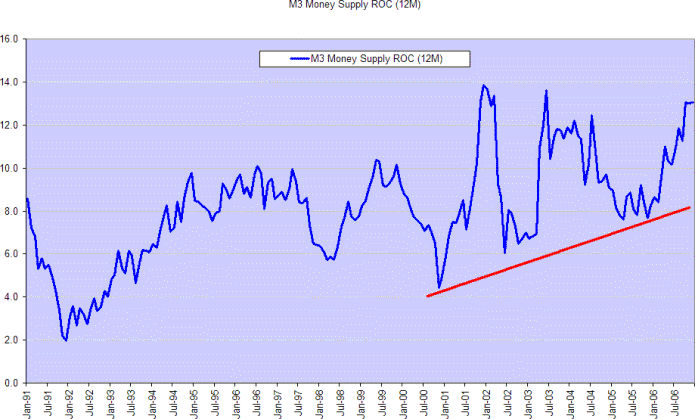
And the European Union -- approaching 10%.
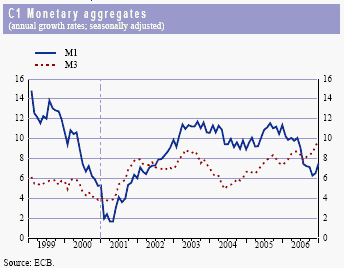
The Fed no longer publishes M3 data, but expansion of the money supply cannot be hidden. It shows up in the other side of the balance sheet -- as expanding bank credit.
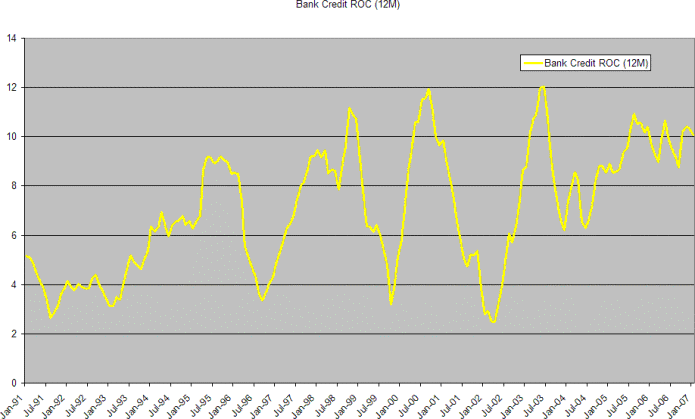
Ten-year treasury yields remain in a slow up-trend and appear headed for another test of the 3-year trendline. Respect of the trendline would signal a test of resistance at 5.25%.
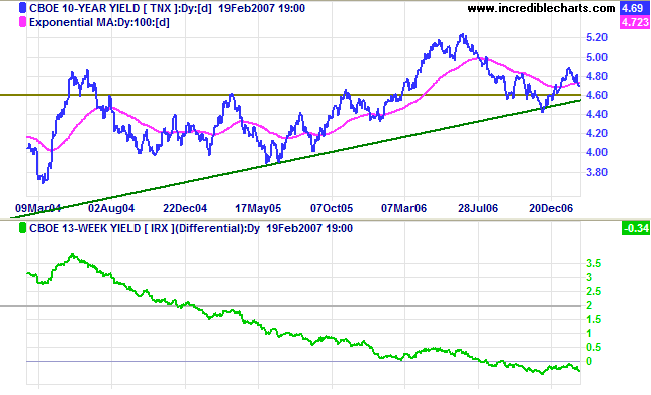
The negative yield differential (10-year minus 13-week treasury yields) is increasing, warning of pressure on banking margins and a possible down-turn.
Equity Markets
The primary trend on the Dow Jones Industrial average is up. Distribution appears to be ending, with Twiggs Money Flow forming a double-bottom above zero. This warns of a further up-surge, but it is not a good time to enter as the rally is extended.
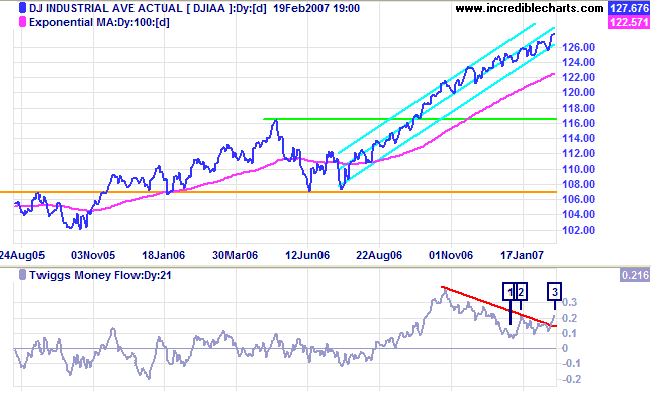
Gold
Spot gold rallied to test resistance at $675. Consolidation
between $650 and $675 would still be a bullish sign. Breakout
above $675 would signal a test of the May 2006 high; the target
is $740 [ 650 + ( 650 - 560) ]. Reversal below $650, though
unlikely at present, would signal that the up-trend is losing
momentum.
Rising crude oil prices are likely to increase demand for gold.
A weaker dollar would also boost gold prices, but this is not
yet evident.
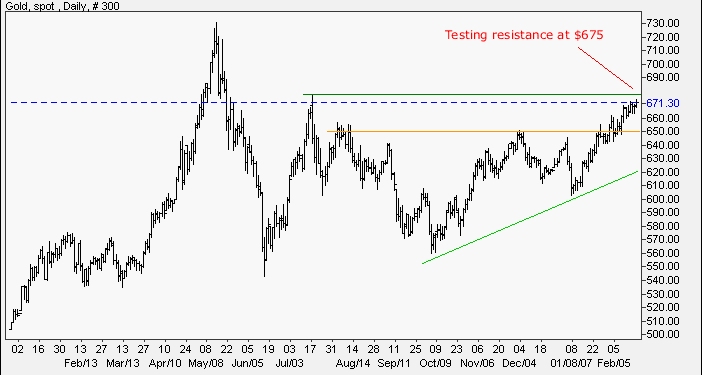
Source: Netdania
Crude Oil
Crude oil is testing resistance at $60/barrel. Breakout above this level would hint at a reversal, but this would only be confirmed if price rises above $64.
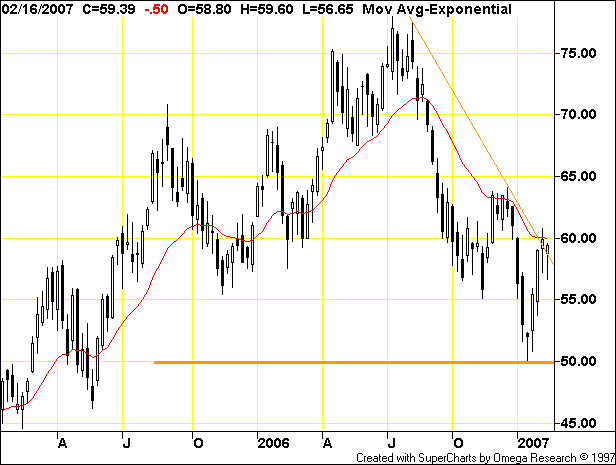
Currencies
The euro rallied above support at $1.29/$1.30. The narrow consolidation over the past few days signals continuation of the up-trend and a likely test of resistance at $1.34.
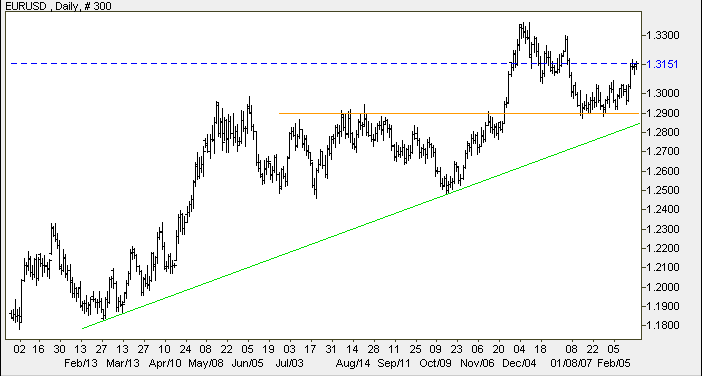
Source: Netdania
The dollar retreated from the important resistance level of 121 against the yen and appears headed for a test of support at 115. A fall below this level, while still unlikely, would signal a test of long-term support at 100. Reversal above 121 would be a bull signal.
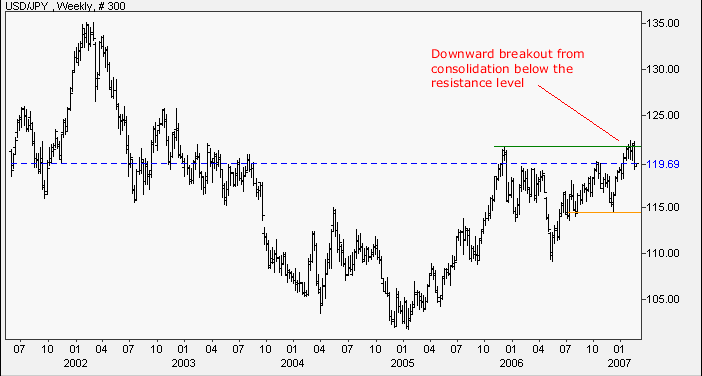
Source: Netdania
Wright Model
Probability of recession in the next four quarters remains at 45 per cent according to the Wright Model.
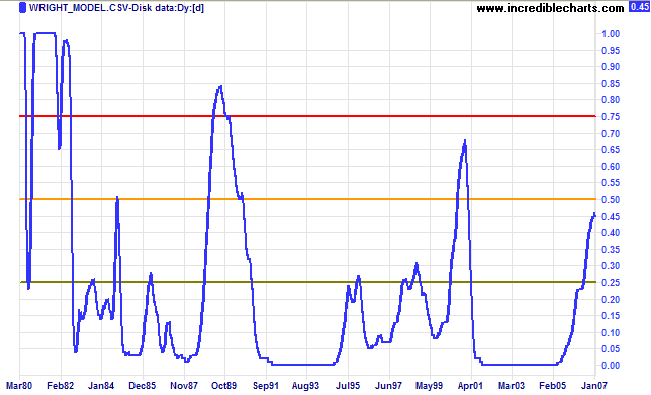
There is some evidence that the Wright model may understate the probability of recession in a low interest rate environment (as at present).
I have never been given to envy - save for the envy I feel
toward those people who have the ability to make a marriage
work and endure happily.
~ J. Paul Getty
Technical Analysis and PredictionsI believe that Technical Analysis should not be used to make predictions because we never know the outcome of a particular pattern or series of events with 100 per cent certainty. The best that we can hope to achieve is a probability of around 80 per cent for any particular outcome: something unexpected will occur at least one in five times.My approach is to assign probabilities to each possible outcome. Assigning actual percentages would imply a degree of precision which, most of the time, is unachievable. Terms used are more general: "this is a strong signal"; "this is likely"; "expect this to follow"; "this is less likely to occur"; "this is unlikely"; and so on. Bear in mind that there are times, especially when the market is in equilibrium, when we may face several scenarios with fairly even probabilities. Analysis is also separated into three time frames: short, medium and long-term. While one time frame may be clear, another could be uncertain. Obviously, we have the greatest chance of success when all three time frames are clear. The market is a dynamic system. I often compare trading to a military operation, not because of its' oppositional nature, but because of the complexity, the continual uncertainty created by conflicting intelligence and the element of chance that can disrupt even the best made plans. Prepare thoroughly, but allow for the unexpected. The formula is simple: trade when probabilities are in your favor; apply proper risk (money) management; and you will succeed. For further background, please read About The Trading Diary. |

Author: Colin Twiggs is a former investment banker with almost 40 years of experience in financial markets. He co-founded Incredible Charts and writes the popular Trading Diary and Patient Investor newsletters.
Using a top-down approach, Colin identifies key macro trends in the global economy before evaluating selected opportunities using a combination of fundamental and technical analysis.
Focusing on interest rates and financial market liquidity as primary drivers of the economic cycle, he warned of the 2008/2009 and 2020 bear markets well ahead of actual events.
He founded PVT Capital (AFSL No. 546090) in May 2023, which offers investment strategy and advice to wholesale clients.
